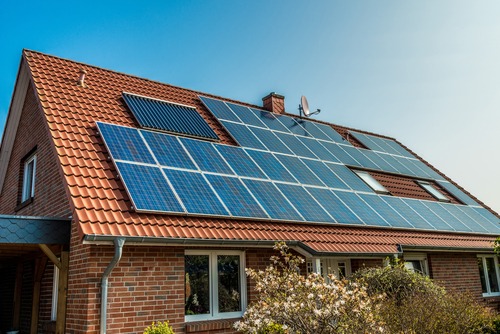CEA: Numerous financial incentives push residential solar costs to record lows

A variety of financial incentives offered by the government and utilities for residents who install rooftop solar systems are significant and have reduced customers’ net costs to record-low levels, a new analysis by the non-profit Consumer Energy Alliance (CEA) found.
The first-of-its-kind report analyzes the cost for a typical solar facility in 15 states, detailing the federal, state and local incentives available for rooftop solar photovoltaic (PV).
As government encourages customers to embrace renewable energy sources, the incentives for residential electricity customers are now so significant that in many states the total incentives are greater than a solar system’s total cost.
“The combined effect of these incentives in all 15 states being equal to three quarters or more of the cost and in eight of the states being more than the cost of the facility definitely is substantial,” Michael Whatley, executive vice president of the Houston-based CEA, said in a recent conference call.
When averaging results of the 15 states, a typical residential customer who owns a solar facility receives total incentives that equal 119 percent of the facility’s installed cost, the report said.
The incentives are even more significant for third party-owned solar facilities, Whatley added.
When a customer leases a solar PV facility or purchases its energy output through a long-term contract, the third-party owner receives the federal solar investment tax credit and five-year accelerated depreciation.
“The total incentive for a third party-owned residential solar PV facility is about 35 percent higher than for an identical customer-owned facility, even though
its installed cost is about 16 percent lower,” the study said.
California residents who own rooftop solar facilities receive the greatest total incentives, equaling 208 percent of the facilities’ installed cost.
The growth rate of solar has exploded as the cost of solar energy technology has steadily declined. Solar is currently the fastest-growing segment of the U.S. renewable energy market, with annual growth rates exceeding 40 percent over the last five years.
Given the major cost reductions in the solar market, the report noted that many states are re-examining their incentive programs and are now considering programs that rely more on a competitive marketplace to provide the economically optimal levels of rooftop solar adoption.
“If a state changes its incentive program or the federal incentives were to go away, then that will have an impact on future markets and on what these residential customers are getting through these incentive packages,” Whatley said.
The report concluded that net metering programs, which pay residential solar customers a higher rate for excess electricity, shift variable energy costs and fixed infrastructure costs completely onto non-solar customers, who are typically less affluent than customers with solar, according to a number of reports.
“Given the cost shift between non-solar PV customers and solar PV customers, we expect that policymakers will contemplate reductions in the NEM (net energy metering) incentives through retail tariff modifications which better match each solar customer’s payments with the costs that customer imposes on the utility,” the study said.
The report also found that incentives for residential solar vary widely between states. The major types of incentives for residential customers who own their solar facilities include tax credits and payments from federal and state governments and electric utilities.
Incentives are also provided by electric utilities through net energy metering policies in 44 states. Additionally, customers may receive solar renewable energy certificates, and incentives are also provided to third-party owners of residential rooftop solar facilities.
